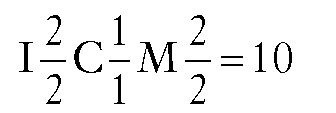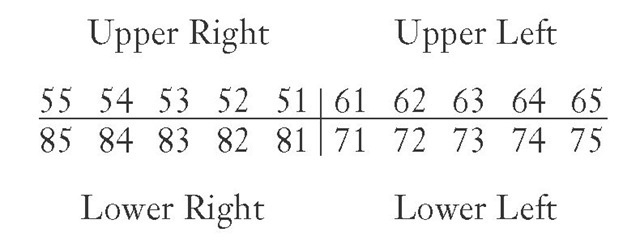Dental anatomy is defined here as, but is not limited to, the study of the development, morphology, function, and identity of each of the teeth in the human dentitions, as well as the way in which the teeth relate in shape, form, structure, color, and function to the other teeth in the same dental arch and to the teeth in the opposing arch. Thus, the study of dental anatomy, physiology, and occlusion provides one of the basic components of the skills needed to practice all phases of dentistry.
The application of dental anatomy to clinical practice can be envisioned in Figure 1-1, A where a disturbance of enamel formation has resulted in esthetic, psychological, and periodontal problems that may be corrected by an appropriate restorative dental treatment such as that illustrated in Figure 1-1, B. The practitioner has to have knowledge of the morphology, occlusion, esthetics, phonetics, and functions of these teeth to undertake such treatment.
Formation of the Dentitions (Overview)
Humans have two sets of teeth in their lifetime. The first set of teeth to be seen in the mouth is the primary or deciduous dentition, which begins to form prenatally at about 14 weeks in utero and is completed postnatally at about 3 years of age. In the absence of congenital disorders, dental disease, or trauma, the first teeth in this dentition begin to appear in the oral cavity at the mean age of 6, and the last emerge at a mean age of 28 ± 4 months. The deciduous dentition remains intact (barring loss from dental caries or trauma) until the child is about 6 years of age. At about that time the first succedaneous or permanent teeth begin to emerge into the mouth. The emergence of these teeth begins the transition or mixed dentition period in which there is a mixture of deciduous and succedaneous teeth present. The transition period lasts from about 6 to 12 years of age and ends when all the deciduous teeth have been shed. At that time the permanent dentition period begins. Thus, the transition from the primary dentition to the permanent dentition begins with the emergence of the first permanent molars, shedding of the deciduous incisors, and emergence of the permanent incisors. The mixed dentition period is often a difficult time for the young child because of habits, missing teeth, teeth of different colors and hues, crowding of the teeth, and malposed teeth.
After the shedding of the deciduous canines and molars, emergence of the permanent canines and premolars, and emergence of the second permanent molars, the permanent dentition is completed (including the roots) at about 14 to 15 years of age, except for the third molars, which are completed at 18 to 25 years of age. In effect, the duration of the permanent dentition period is 12+ years.
Figure 1-1 A, Chronological developmental disorder involving all the anterior teeth. B, Illustration of restored teeth just after completion, taking in account esthetics, occlusion, and periodontal health. Note that the gingival response is not yet resolved.
Nomenclature
The first step in understanding dental anatomy is to learn the nomenclature, or the system of names, used to describe or classify the material included in the subject. When a significant term is used for the first time here, it is emphasized in bold. Additional terms will be discussed as needed in subsequent topics.
The term mandibular refers to the lower jaw, or mandible. The term maxillary refers to the upper jaw, or maxilla. When more than one name is used in the literature to describe something, the two most commonly used names will be used initially. After that they may be combined or used separately as consistent with the literature of a particular specialty of dentistry, for example, primary or deciduous dentition, permanent or succedaneous dentition. A good case may be made for the use of both terms. By dictionary definition,1 the term primary can mean "constituting or belonging to the first stage in any process." The term deciduous can mean "not permanent, transitory." The same unabridged dictionary refers the reader from the definition of deciduous tooth to milk tooth, which is defined as "one of the temporary teeth of a mammal that are replaced by permanent teeth. Also called baby tooth, deciduous tooth." The term primary can indicate a first dentition and the term deciduous can indicate that the first dentition is not permanent, but not unimportant. The term succedaneous can be used to describe a successor dentition and does not suggest permanence, whereas the term permanent suggests a permanent dentition, which may not be the case due to dental caries, periodontal diseases, and trauma. All four of these descriptive terms appear in the professional literature.
Formulae for Mammalian Teeth
The denomination and number of all mammalian teeth are expressed by formulae that are used to differentiate the human dentitions from those of other species. The denomination of each tooth is often represented by the initial letter in its name (e.g., I for incisor, C for canine, P for premolar, M for molar). Each letter is followed by a horizontal line and the number of each type of tooth is placed above the line for the maxilla (upper jaw) and below the line for the mandible (lower jaw). The formulae include one side only, with the number of teeth in each jaw being the same for humans.
The dental formula for the primary/deciduous teeth in humans is as follows:
This formula should be read as: incisors, two maxillary and two mandibular; canines, one maxillary and one mandibular; molars, two maxillary and two mandibular—or 10 altogether on one side, right or left (Figure 1-2, A).
A dental formula for the permanent human dentition is as follows:
Premolars have now been added to the formula, two maxillary and two mandibular, and a third molar has been added, one maxillary and one mandibular (Figure 1-2, B).
Systems for scoring key morphological traits of the permanent dentition that are used for anthropological studies are not described here. However, a few of the morphological traits that are used in anthropological studies2 are considered in the following topics, (e.g., shoveling, Carabelli’s trait, enamel extensions, and peg-shaped incisors). Some anthropologists use di1, di2, dc, dm1, and dm2 notations for the deciduous dentition and I1, I2, C, P1, P2, M1, M2, and M3 for the permanent teeth. These notations are generally limited to anthropological tables because of keyboard incompatibility.
Tooth Numbering Systems
In clinical practice some "shorthand" system of tooth notation is necessary for recording data. There are several systems in use in the world, but only a few are considered here. In 1947 a committee of the American Dental Association (ADA) recommended the symbolic (Zsigmondy/Palmer) system as the numbering method of choice.3 However, because of difficulties with keyboard notation of the symbolic notation system, the ADA in 1968 officially recommended the "universal" numbering system. Because of some limitations and lack of widespread use internationally, recommendations for a change sometimes are made.4
Figure 1-2 A, Casts of deciduous, or primary, dentition. B, Casts of permanent dentition.
The universal system of notation for the primary dentition uses uppercase letters for each of the primary teeth: For the maxillary teeth, beginning with the right second molar, letters A through J, and for the mandibular teeth, letters K through T, beginning with the left mandibular second molar. The universal system notation for the entire primary dentition is as follows:
The symbolic system for the permanent dentition was introduced by Adolph Zsigmondy of Vienna in 1861 and then modified for the primary dentition in 1874.
Independently, Palmer also published the symbolic system in 1870. The symbolic system is most often referred to as the Palmer notation system in the United States and less frequently as the Zsigmondy/Palmer notation system. In this system the arches are divided into quadrants with the entire dentition being notated as follows:
Thus, for a single tooth such as the maxillary right central incisor the designation is AJ. For the mandibular left central incisor, the notation is given as ÍA. This numbering system presents difficulty when an appropriate font is not available for keyboard recording of Zsigmondy/Palmer symbolic notations. For simplification this symbolic notation is often designated as Palmer’s dental notation rather than Zsig-mondy/Palmer notation.
In the universal notation system for the permanent dentition, the maxillary teeth are numbered from 1 through 16, beginning with the right third molar. Beginning with the mandibular left third molar, the teeth are numbered 17 through 32. Thus, the right maxillary first molar is designated as 3, the maxillary left central incisor as 9, and the right mandibular first molar as 30. The following universal notation designates the entire permanent dentition.
The Zsigmondy/Palmer notation for the permanent dentition is a four-quadrant symbolic system in which, beginning with the central incisors, the teeth are numbered 1 through 8 (or more) in each arch. For example, the right maxillary first molar is designated as 6, and the left mandibular central incisor as Í1 . The Palmer notation for the entire permanent dentition is as follows:
Viktor Haderup of Denmark in 1891 devised a variant of the eight-tooth quadrant system in which plus (+) and minus (-) were used to differentiate between upper and lower quadrants and between right and left quadrants; in other words, +1 indicates the upper left central incisor and 1-indicates the lower right central incisor. Primary teeth were numbered as follows: upper right, 05+ to 01+; lower left, -01 to -05. This system is still taught in Denmark.5
The universal system is acceptable to computer language, whereas the Palmer notation is generally incompatible with computers and word processing systems. Each tooth in the universal system is designated with a unique number, which leads to less confusion than with the Palmer notation.
A two-digit system proposed by Fédération Dentaire Internationale (FDI) for both the primary and permanent dentitions has been adopted by the World Health Organization and accepted by other organizations such as the Inter- national Association for Dental Research. The FDI system of tooth notation is as follows. For the primary teeth:
Numeral 5 indicates the maxillary right side, and 6 indicates the maxillary left side. The second number of the two-digit number is the tooth number for each side. The number 8 indicates the mandibular right side, and the number 7 indicates the mandibular left side. The second number of the two-digit system is the tooth number. Thus, for example the number 51 refers to the maxillary right central incisor.
For the permanent teeth:
Thus, as in the two-digit FDI system for the primary dentition, the first digit indicates the quadrant: 1 to 4 for the permanent dentition and 5 to 8 for the primary dentition. The second digit indicates the tooth within a quadrant: 1 to 8 for the permanent teeth and 1 to 5 for the primary teeth. For example, the permanent upper right central incisor is 11 (pronounced "one one," not "eleven").










